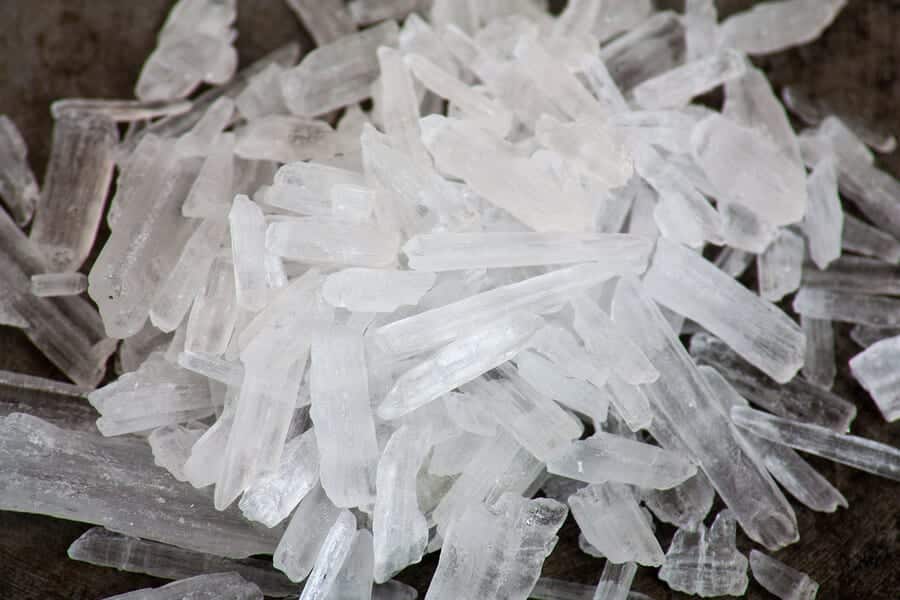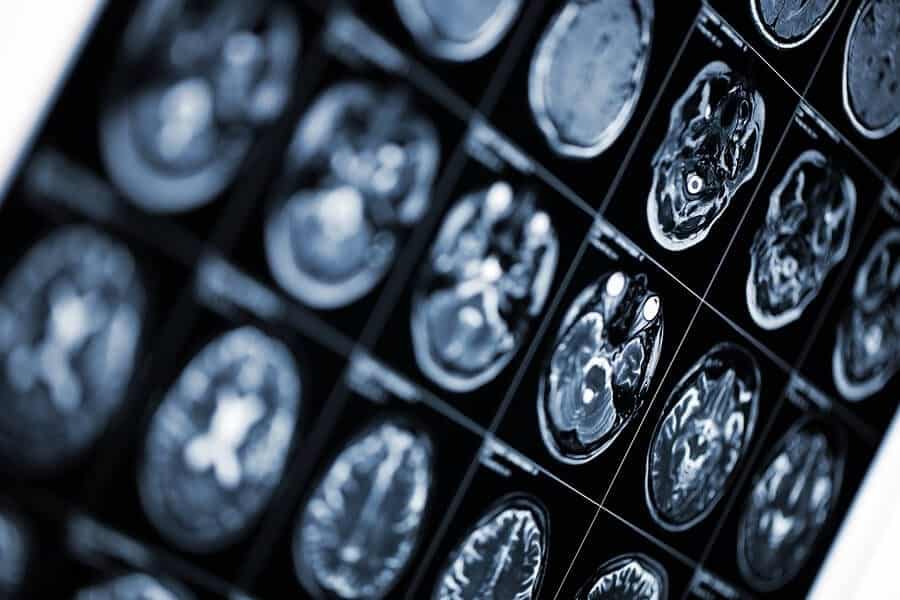
Effects of Crystal Meth – Methamphetamine hydrochloride (also known as meth or crystal meth) is a psychostimulant with a high potential for addiction that affects the brain, spinal cord, and central nervous system (CNS). Depending on its form, meth can either be smoked using a pipe (as in crystal form), dissolved in water and injected, snorted as a powder, swallowed in tablet form (Desoxyn), or administered through the urethra or rectum.
Like cocaine, meth changes the way the brain produces the neurotransmitter dopamine by radically elevating levels. Dopamine is a chemical responsible for feelings of motivation, reward, and pleasure. Furthermore, meth also has significant effects on the way the brain manages serotonin, another neurotransmitter that is responsible for mood and personality regulation, among other functions.
What meth looks like depends on the form in which it is produced. Meth is available in the following forms:
Powder—This form, also widely known as speed or crank, is a coarse or fine powder and is usually off-white to yellowish. Pharmaceutical grade powder meth can also be found as a tablet of the prescription drug Desoxyn, a medication that is indicated to treat stubborn attention-deficit hyperactivity disorder (ADHD) and obesity. Meth is usually least potent when found in this form.
Base—This form, also known as base, point, or wax, is a damp, chunky, and gritty paste-like substance, and is off-white, pink, yellow, or brown. This form is usually more pure and potent than powder.
Crystal—This form, also known as crystal meth, is manufactured illicitly using a combination of over-the-counter medications and poisonous substances in clandestine labs, both in the U.S. and elsewhere (Mexico, for example) for recreational purposes. Crystal meth, which is sometimes also called ice, blue ice, or glass, presents as a white or bluish-white, quartzlike glass shard or rock. Meth is typically the purest and most potent when found in this form.
Effects of Crystal Meth
As a stimulant, meth induces an intense “rush” of feelings of well-being as heart rate, blood pressure and libido all increase. A meth rush is shortly followed by a powerful extended high. Despite this high, crystal meth is an exceptionally dangerous drug.
Crystal meth is known to cause a myriad of acute psychological side effects, such as the following:
- Nervousness and fidgeting
- Irritability and agitation
- Aggression and violent behavior
- Hypervigilance and paranoia
- Enhanced concentration and focus
- Racing thoughts and speech
- Hyperactivity
- Restlessness
- Insomnia
- Increased energy and libido
- Increased sociability
- Reduced inhibitions
- Elevated confidence
- Delusions of grandeur
- A sense of power or invincibility
- Hallucinations
- Psychomotor agitation
- Compulsive or repetitive behaviors
Crystal meth also causes a laundry list of acute physical effects, including the following:
- Dilated pupils and blurred vision
- Diarrhea or Constipation
- Dizziness
- Dry mouth
- Bruxism (teeth clenching)
- Acne or dry, itchy skin
- Flushing
- Elevated body temperature
- Heart palpitations
- Tachycardia (rapid heart rate)
- Tachypnea (rapid respiration)
- Headaches
- Increased blood pressure
- Numbness
- Pallor
- Excessive sweating
- Restlessness
- Twitching or tremors
The high produced by cocaine (coke) usually only lasts between 15-30 minutes, and for crack cocaine, only 5-10 minutes. In comparison, just the rush experienced by meth use can last over a half an hour, and the subsequent high can persist for between 8-24 hours. Meth is also usually cheaper than coke, so a person seeking a high that is longer-lasting and probably less expensive than other stimulants such as coke may very well opt for meth in some form.
Unfortunately, being under the influence of a substance for this length of time also means that the person’s body must also endure any physiological stress it produces. Moreover, the human body did not evolve to handle being high on powerful stimulants very well, especially over an extended period. Therefore, significant internal and physical damage is inevitable for many chronic users of meth.

Meth Mouth
Meth is famous for causing severe dental deterioration and decay, commonly referred to as “meth mouth.” This condition occurs because meth users often have dry mouth that lacks the saliva necessary to protect teeth from the acidic elements used in meth production, including battery acid, hydrochloric acid, and drain cleaner, among others. Also, meth users are prone to repeatedly clench and grind their teeth, crave sugary drinks, and neglect oral hygiene in favor of abusing or binging meth.
Tweaking
Prolonged periods of continuous meth use, also known as a binge, can result in a state of profound drug intoxication referred to as “tweaking,” which is often considered one of the most dangerous outcomes of meth use. Tweaking occurs when a user binges for several days without sleep and begins to become paranoid and unstable. Tweaking is marked by compulsive, uncontrollable scratching, tremors, mood swings, paranoia, and tactile hallucinations that feel like bugs crawling under the skin.
Recreational Effects
Crystal meth has achieved popularity among people who use it to heighten pleasure while going to clubs, raves, and parties. Some use it because as an appetite suppressant, it tends to cause rapid weight loss, although this weight frequently returns upon cessation of drug use. And because the user will build an increasing tolerance of meth, this weight loss effect tends to lessen over time.
Some also use it as a means to self-medicate depression, owing to its prolonged mood-enhancing and euphoric effects. Others consume it primarily as an aphrodisiac because it increases libido and can enhance sexual pleasure.
Brain Damage
Concerning regions in the brain associated with dopamine production and processing, neural imaging studies have revealed that chronic meth users exhibit structural transformations severe enough to compromise their motor skills and verbal learning abilities. Likewise, meth can disrupt brain regions involved with memory and emotion. For these reasons, long-term meth abusers commonly develop cognitive impairments and dysregulated emotions.
And unfortunately, some of these neurological alterations may continue long after meth use has been discontinued. Many of the adverse changes associated with the transmission and processing of chemicals will gradually reverse, but this process may demand more than a year of abstinence. Moreover, some instances of devastating neurochemical trauma precipitated by excessive meth use lead to irreversible brain damage.

Physical effects induced by long-term meth use include the following:
- Increased tolerance
- Chemical dependence
- Meth mouth
- Burn sores
- Sores from itching skin
- Bacterial skin infections
- Premature skin aging
- Frequent nosebleeds if snorted
- Rapid weight loss or anorexia
- Malnutrition
- Brain cell destruction
- Kidney and liver damage
- Lung damage
- Congenital impairments
- Seizures
What’s more, long-term crystal meth use dramatically increases the risk of cardiovascular disease, heart attack, and stroke.
Psychological effects caused by chronic meth abuse include the following:
- Anxiety and depression
- Paranoia
- Meth psychosis
- Insomnia
- Psychosomatic disorders
- Addiction and compulsive drug-seeking behaviors
Meth users also encounter many other risks associated with drug use, such as contracting HIV or hepatitis B and C, and overdose. The reduced inhibitions caused by meth may prompt some users to inject the drug using dirty needles, as well as participate in unprotected sex. Likewise, the physiological strain of meth in the body can hasten the progression of HIV and AIDS.
Treatment for Meth Addiction
Meth addiction is a particularly devastating condition that negatively affects the health and emotional wellness of those suffering, as well as the lives of those around them.
Fortunately, meth addiction is very treatable using a comprehensive approach to substance abuse. Former meth users seeking recovery can achieve abstinence and restore emotional and physical wellness to their lives. Harmony Recovery Centers offers professional addiction treatment that includes clinically-proven, evidence-based services vital to the recovery process.
If you or someone you love is suffering from an addiction to meth, please contact us as soon as possible to discuss treatment options. We can help you recover from your addiction and reclaim the happy, healthy, and fulfilling life you deserve!
Related: Adderall Addiction and Abuse